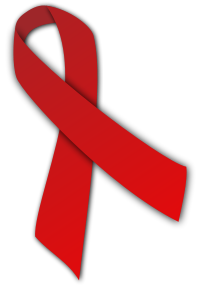
Photo from wikipedia
Objectives To assess HIV pre-exposure prophylaxis (PrEP) prescribing habits by primary care providers and the number of patients at risk of HIV acquisition at a single medical centre in the… Click to show full abstract
Objectives To assess HIV pre-exposure prophylaxis (PrEP) prescribing habits by primary care providers and the number of patients at risk of HIV acquisition at a single medical centre in the Northwestern USA from 1 July 2018 to 31 June 2020. Methods An electronic cross-sectional survey was administered in April and May 2021 to providers in family medicine, internal medicine, adolescent and young adult health, student health and women’s health clinics affiliated with the medical centre with questions pertaining to PrEP prescribing practices. Electronic medical record abstraction was used to quantify the number of eligible patients who sought care in primary care departments and the adherence to PrEP initiation guidelines from 1 July 2018 to 31 June 2020. Results 74% (61/82) of providers reported familiarity with national clinical practice guidelines for the prevention of HIV infection. 50% (41/82) of respondents were located in family medicine clinics. 57% (47/82) of providers counseled less than one-quarter of those who they identified as at risk of HIV infection. The major barriers to prescribing PrEP were insufficient time and lack of familiarity with guidelines. Of the 4330 eligible patients for PrEP, 8% (337/4330) received at least one PrEP prescription during the study period. For patients newly prescribed PrEP, only 23% (39/170) had appropriate counseling and labs at initiation. The top three qualifying indications for PrEP were identifying as transgender (36%, n=1562), high-risk sexual behaviour (32%, n=1405) and injection drug use (30%, n=1289). Conclusions This study highlights intervention points in the HIV prevention cascade warranting attention in order to achieve the 2025 Ending the HIV Epidemic in the U.S. target for PrEP coverage. These include increasing provider adherence to prescribing guidelines and reducing the logistical barriers to prescribing.
Journal Title: Sexually Transmitted Infections
Year Published: 2023
Link to full text (if available)
Share on Social Media: Sign Up to like & get
recommendations!